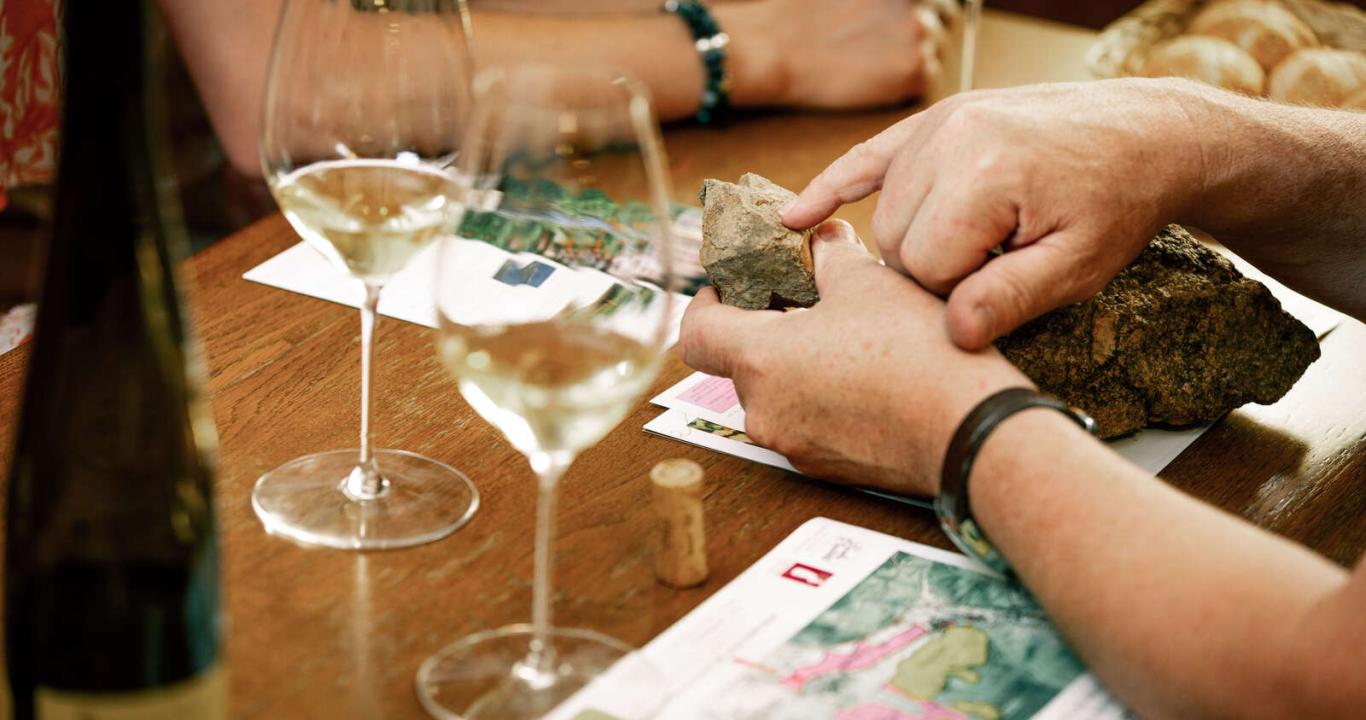Alsace wines: everything you need to know
Alsace wines have the Appellation d'Origine Contrôlée (AOC) label, guaranteeing the authenticity of their provenance and compliance with strict standards, from vine-growing to bottling.
The 7 emblematic grape varieties of the Alsace vineyard
For a long time, Alsace has been known only for its 7 grape varieties: Gewurztraminer, Riesling, Muscat, Sylvaner, Pinot Gris, Pinot Blanc and Pinot Noir (the red exception).
Each variety has its own particularities, from dry Riesling to sweet Gewurztraminer.
Even today, most Alsatian winegrowers still cultivate these 7 grape varieties. Edelzwicker and Gentil, wines blended from different grape varieties, defy prejudice by revealing their own character in harmony with Alsatian gastronomy.
Terroirs and Grands Crus
For several years now, Alsace has been celebrating the impact of terroir on its wines.
But what is terroir, you might ask? It's the influence of the soil and (micro)climatic conditions on the vine. Each terroir gives its wines a distinct identity, which is expressed in the 51 Alsace Grands Crus.
In the Kaysersberg valley, the Grand Cru Schlossberg, pioneer of the Alsace Grands Crus in 1975, and the Grand Cru Kaefferkopf, the last Grand Cru to be recognised in Alsace in 2007, tell the story of the Grands Crus.
The Grand Cru appellation generally recognises single grape varieties. The Grand Cru Kaefferkopf is one of the exceptions to this rule: it recognises a blend of Gewurztraminer, Riesling, Pinot Gris and Muscat.
Recognition of exceptional terroirs and lieux-dits, not included in the Grands Crus label, has also been stepped up in recent years by winegrowers, who proudly display them on their labels alongside the AOC and the grape variety.
Vendanges Tardives and Sélections de Grains Nobles
Vendanges Tardives and Sélections de Grains Nobles embody the excellence of the sweet wines, rich in aroma and softness in the range of Alsace wines.
Made from grapes that mature for longer, these are rarer wines with complex aromas.
Crémant d'Alsace
This overview of Alsace wines would be incomplete without mentioning the famous Crémant d'Alsace. With its fine bubbles, freshness and fruity aromas, it is a serious competitor to its cousin Champagne.
Table wines or wines for laying down?
While red wines were once the only ones that could lay claim to being wines for laying down, Alsace's white wines now rival them.
Wines such as a Riesling Grand Cru Schlossberg mature over the years, revealing their aromas and potential after a few years in the cellar.
Focus on the Grands Crus of the Kaysersberg valley
The Kaysersberg valley boasts 7 prestigious Grands Crus, reflecting the richness of the local terroirs and the expertise of the winegrowers.
- Furstentum, on the heights of Kientzheim and Sigolsheim,
- Mambourg in Sigolsheim,
- Marckrain in Sigolsheim,
- Schlossberg, the first Grand Cru d'Alsace (1975) in Kientzheim and Kaysersberg,
- Sommerberg in Katzenthal,
- Wineck-Schlossberg, in Katzenthal,
- Kaefferkopf, the last Grand Cru on the list since 2007, in Ammerschwihr.
Alcohol abuse is dangerous for your health, and should be consumed in moderation.


